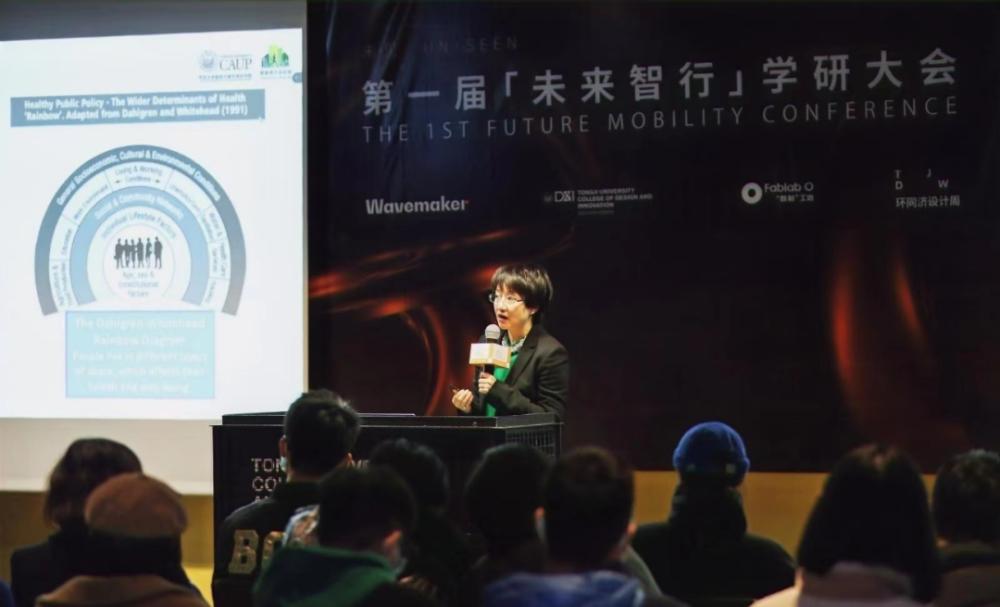Not long ago, I went to the School of Creative Design of Tongji University to participate in a fun event called the first "Future Wisdom Walk" Academic Research Conference and Theme Workshop.

What's going on? Let's introduce ourselves: It is jointly initiated by NIO China, the School of Creative Design of Tongji University and the FABLAB O| "Digital System" Workshop, aiming to explore the value and ecological transformation trend of the automotive industry under global issues such as artificial intelligence and sustainable development, and re-enter the future of automobile and transportation from the perspective of design.
To speak is to sit together and imagine what the future of travel will look like.
The participants were very interesting, including university professors, scholars, students from major universities, and the media, whose backgrounds involved in automotive, design, planning, social humanities, fashion, and culture, interdisciplinary, cross-field, and cross-age groups, which can maximize the collision of views.
As one of the 12 invited media, we were asked three questions by the organizers and shared some shallow views.
The three questions are:
1. What will the shape of the car look like in the future?
2, make a sentence: the current car is like ___, the future car is like ___.
3. Who do you think will be a dark horse or a subversive? Which brands to expect to build cars.
Answers:
1: An important feature of the future car is to achieve true driverlessness. At that time, the so-called driving pleasure will be gone, but it can make a big fuss about the riding pleasure. After the realization of true unmanned driving, the space in the car can be greatly expanded, and the imagination space is still very large, which can be arranged into a mobile small bedroom, theater, KTV, chess and card room. And these are particularly meaningful for long-distance driving, for example, leaving at night, sleeping in the car, and the dawn arrives.
In addition, the future of the car will also have a form, that is, flying cars, although in the short term can be foreseen limited application scenarios, but if the implementation of special tasks will be very valuable, for example, in case of emergencies, law enforcement agencies can rush to rush.
Xiaopeng Automobile recently released a vision that it will mass-produce flying cars with a high degree of completion in 2024, which is quite forward-looking.
2: The modern car is like a horse, and the future car is like a palanquin behind a horse.
3: Now look, Tesla is a disruptor. Its car is not only advanced, but also achieved very bold innovations in manufacturing, such as one-piece molding casting machines, etc., to achieve cost control. Their slogan is to accelerate the world's transition to sustainable energy, and low cost is the basis for accelerating the word.
Expect Apple and Huawei to build cars. In general, Apple's performance in aesthetics, craftsmanship, and humanities is beyond anyone. I'm looking forward to Apple's unique aesthetic feeling, appearing on the car.
Huawei is a business miracle in the world, and despite the harsh sanctions of the United States, it is still indomitable and flexible, and this ability is estimated that no organization can do. And it looks at what it can do until it becomes the world's first, from being an operator to doing a personal terminal like a mobile phone, from hardware, to doing HMS mobile services after the US sanctions, hongmeng system software, very powerful.
So, I think if Huawei makes cars, then we should have a truly world-class car brand in China.
However, what I share is still very one-sided and short-sighted when viewed throughout the conference.
The reason why it is one-sided is because professors and scholars have a very broad perspective on the problem, and they expound from four themes: environment and sustainability, AI and metaversity, 15-minute community life circle, and the cultural value of cars.
Among them, what impressed me the most was the speech of Associate Professor Luo Xiao of the School of Transportation Engineering of Tongji University. He proposed that with the development of technology, human leisure time is more and more, then the demand for leisure space will gradually increase, therefore, including transportation hubs, transportation operation methods, logistics systems, etc., urban transportation systems, etc., should be redesigned to meet this demand.
It is easy to understand, for example, the "Huangpu River Penetration Project" in Shanghai is to meet the needs of citizens for riverside leisure space by creating leisure along the river.
Why am I impressed with this? Because, I also want to relax! But I never thought that leisure was also about the urban transportation system.
The reason why I say short-sightedness is because when I imagine the future travel with the students, they have a big brain and imagine the long-term future. For example, the students in my discussion group explored one of the scenarios of the 2035 travel metaverse.
For example, in the process of travel, even if a child is interested in a certain kind of green plant encountered, the vehicle can inform him of the relevant knowledge points.
I went inside, this means of transport is not only as simple as transporting people, it is a walking encyclopedia.
Finally, weakly ask, what do you think of the future of travel?
—END—